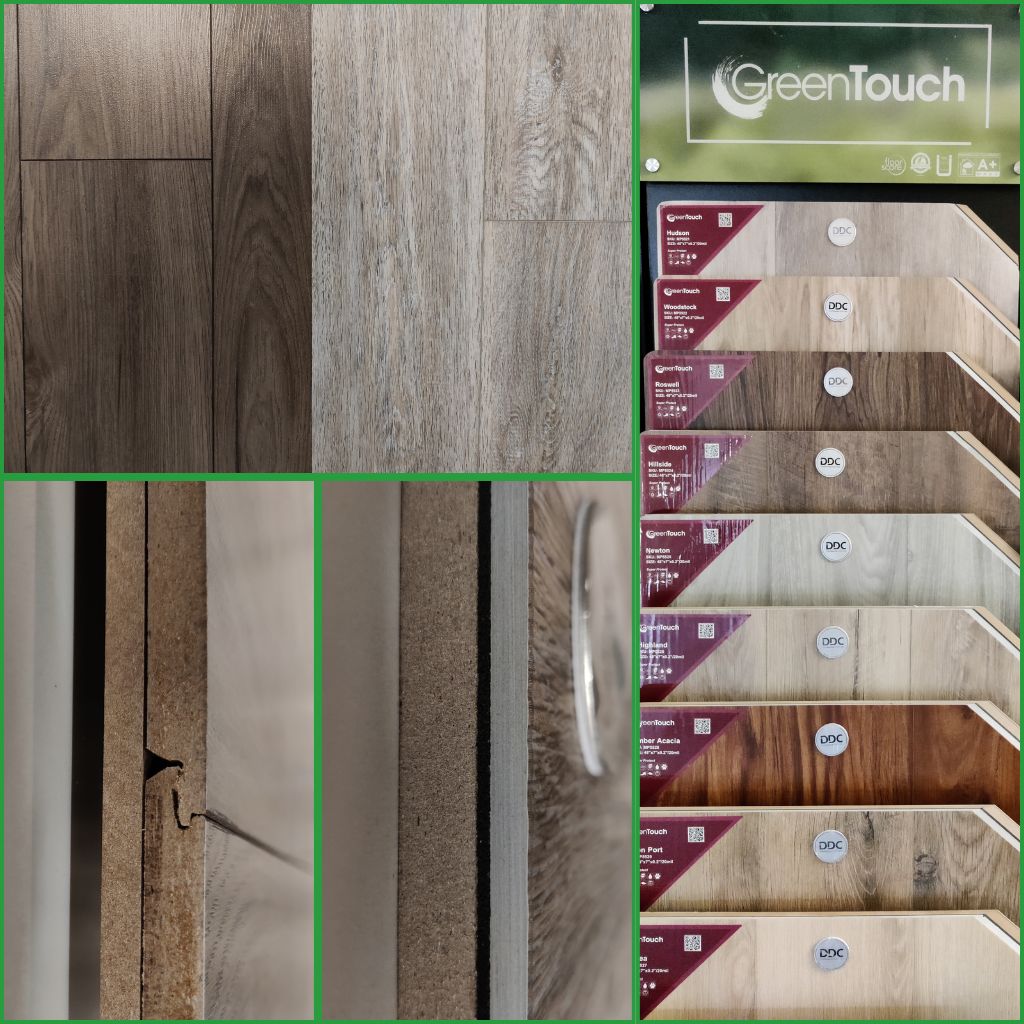Key Differences Between Vinyl and Laminate Flooring
Vinyl flooring is made from synthetic PVC materials, making it waterproof and ideal for high-moisture environments such as bathrooms, basements, and laundry rooms. The planks are thinner and more flexible, which helps absorb sound and offers a softer, quieter feel underfoot. Vinyl is available in several installation types: including glue-down, click-lock, and peel-and-stick, making it a versatile choice for a variety of subfloors and spaces.
Laminate flooring, on the other hand, has a thicker, wood-based core and is only water-resistant, which makes it better suited for dry areas like living rooms and bedrooms. It typically offers a more realistic wood look and feel due to its high-density fiberboard core and textured surface. Laminate is most often installed as a floating floor, though some varieties can be glued down. In case of significant water damage, such as flooding, laminate flooring cannot be reused and must be completely replaced, whereas vinyl may be salvageable in rare cases, but often needs replacement as well.
Shared Benefits and Similarities
Both vinyl and laminate are affordable, easy to install, and come in a wide range of styles that mimic wood, tile, or stone. They require minimal maintenance and can be installed over various subfloors if properly prepared.
Subfloor and Underlayment Requirements
A level, clean subfloor is critical for both products. Laminate always needs underlayment unless pre-attached; options include foam, cork, or felt. Vinyl underlayment depends on the product: rigid core vinyl may include padding, while glue-down types require none. In basements or on concrete, a moisture barrier is often necessary.
Changing Plank Orientation Over Joists
Planks should be installed perpendicular to joists for structural strength. If you need to run planks parallel to joists, reinforce the subfloor with thicker plywood, sistering weak joists and install blocking between joists to prevent bounce or movement.
Common Flooring Installation Questions:
Q: Can I install laminate or vinyl parallel to the joists?
A: Yes, with subfloor reinforcement such as blocking and added plywood which increases the cost for both materials and labour.
Q: What's the difference between subfloor and underlayment?
A: The subfloor is the structural layer beneath everything, while underlayment is a thin, optional layer between the subfloor and the finished floor.
Q: What is sistering a joist?
A: It means attaching a new joist alongside a damaged or weak one to restore strength and stability.
Q: What is blocking?
A: Short pieces of wood placed between joists to reduce bounce, prevent twisting, and distribute weight evenly.
Final Thoughts
With the right preparation and materials, both options offer durability, beauty, and practicality in modern homes. In case of significant water damage, such as flooding, laminate flooring cannot be reused and must be entirely replaced. Vinyl flooring tolerates high levels of humidity and it even may be salvageable in some cases of flooding, more often than not though, it also requires full replacement.
While both vinyl and laminate flooring offer distinct advantages, vinyl has become the more widely used option in modern homes, especially in full-house installations. One of the key reasons for its popularity is its ability to handle both high-humidity and dry environments seamlessly, eliminating the need for transitions or changes in flooring type between rooms like bathrooms, kitchens, and living spaces.
Vinyl is in high demand, GreenTouch and L.W. Mountain are two of the most trusted and used brands on the market.
